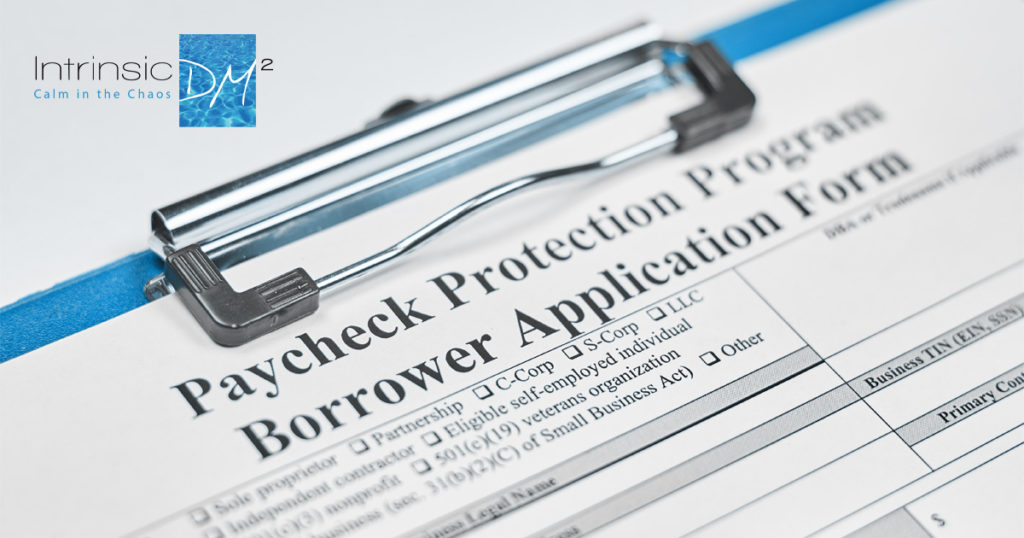As we suspected, further guidance was provided by the SBA late May 22, related to the PPP (Paycheck Protection Program) provisional rules.
Again, the detail instructions provide little remedy to the additional questions we continue to have. However, countless earlier questions were addressed in detail. As professionals, many of us rely on the statute which states that forgivable expenses include “costs incurred, and payment made during the covered period….”.
What are the final costs that are included?
The SBA reiterate that the costs eligible for forgiveness include: Payroll Costs, Interest on Mortgage Obligations, Rent and Utilities.
The payroll costs are the employees compensation counting “vacation, parental, family, medical, or sick leave, allowances for separation or dismissal, payments for group health care coverage, including insurance premiums, and retirement, as well as payment of state and local taxes assessed on compensation of employees.”
Further clarifications given to compensation paid to a furloughed and bonuses and “hazard pay” will be counted as legitimate payroll costs up to $15,385 during the covered period.
Upsettingly, “The Rules state that compensation paid to owners cannot exceed the lesser of (1) 15,385, or (2) 8/52nds of their 2019 compensation”. That translates that shareholders of S-corporations or a C-Corporations received low compensation in 2019 may have a limited forgiveness as a result of this rules.
Retirement as we know from previous guidance includes 401K or equivalent, pension and profit-sharing plans but it does not specify stock options and other plans for highly compensated employees and any other non-income payments.
As it currently stands, retirement plan contributions and health-care premiums are not eligible for forgiveness as part of payroll if you are self-employed.
What about the timing of the payroll?
In the instructions the SBA has concluded that “Paid” and “incurred” are two independent test for forgiveness and further provides that costs incurred before the end of the 56-day period will count towards forgiveness if they are paid on or before the next regular payroll date.
The SBA introduces additional covered period which referred to the alternative payroll covered periods. Since many Borrowers have payroll periods that do not align with this 8-week covered period, the SBA has provided an option for Borrowers to calculate payroll costs using an “alternative payroll covered period” that aligns with Borrowers’ regular payroll cycles. Borrowers with a biweekly (or more frequent) payroll schedule may elect to calculate eligible payroll costs using the 8-week period that begins on the first day of their first pay period following their PPP loan disbursement date.
What about the costs for Interest, Rent and Utilities?
According to the SBA rule “Interest payments on any business mortgage obligation on real or personal property that was incurred before February 15, 2020 (but not any prepayment or payment of principal).” Therefore, interest on indebtedness secured by “personal property” (items that are not real estate) can be forgiven on debt that “was incurred” before February 15, 2020. Further clarifications were given to agreements that include interest increased after February 15, but before the beginning of the eight-week period will be included in the forgiveness amount. Advance and prepaid interest owed will not be eligible amount for forgiveness.
The rule on rent refers to rental of real estates or non-real-estate assets. Just like the above Interest rule, the lease rent agreement is valid and “…..in force before February 15, 2020.”.
Utilities employ the same logic as the rent and interest. Utilities refers to “business utility payments for the distribution of electricity, gas, water, transportation, telephone or internet access for which service began before February 15, 2020.” These expenses therefor, include cell phone and internet use.
The non-payroll costs should be paid during the covered period or incurred during the covered period and paid or before the next regular billing date, even if the billing date is after the covered period.
Again, we cannot stress enough, please review the form and please let us know if you have any questions. The SBA continue to address and clarify vague guidelines every week, keep looking for updates from Intrinsic dm², Inc as we receive them directly from the SBA or the IRS.
Furthermore, safeguard all your documentation in relations to the above guidelines.
The form is available online either through the SBA.gov or through your PPP funds provided.
“The test of our progress is not whether we add more to the abundance of those who have much; it is whether we provide enough for those who have too little.” Franklin D. Roosevelt, January 20, 1937

